Designing and Installing Distributed Audio Systems
Designing andInstalling Distributed Audio Systems
In this chapter, you will learn about
- Designing and planning a distributed audio system
- Performing a rough-in installation of audio system components
- Performing the trim-out phase for the audio system
- Setting up the components, system, and testing
In a recent survey conducted by a home automation industry group, homeowners and people looking to buy a home responded that a whole-house audio system was either something they were planning to install or regarded as a plus when considering a new house. We are no longer limited to playing a radio very loud so it can be heard throughout the house (and possibly the neighborhood). Whole-house audio systems can be as sophisticated as the legendary system in Bill Gates’ home, where the music played in each room is individualized to the room’s occupant automatically, or as simple as the same audio output being played by all speakers placed in the ceilings or walls of each room of a home.
Planning, designing, and installing a whole-house audio system isn’t really all that complicated, but there are some design considerations, pitfalls, and compatibility issues that must be included in the planning and design phases.
Like a computer network or a distributed video system, a distributed audio system can be retrofitted into a home. However, in new construction situations, with proper planning and the use of a structured wiring infrastructure, all three types of systems can be easily integrated. As the various audio system topics in this chapter are discussed, keep structured wiring and how the audio system can be combined into an integrated home system in mind.
Planning for a Distributed Audio System
The very first consideration when planning for a distributed audio system is whether the system is a retrofit, meaning if it is to be added to an existing structure or a new construction. In many ways, a retrofit installation is more difficult than a new construction installation. It is certainly much easier to wire an audio system into a house while it is being built than it is to run wire through existing and closed up walls, ceilings, or floors.
In a retrofit situation, or what the electricians call “old work,” the most important project considerations are first where to place the distributed devices, such as speakers and controls, and then where and how to run cable to them from the centralized source devices.
Planning for Distributed Audio
Typically, at the start of any distributed audio installation project, whether for an existing or new structure, no real plan exists for what exactly is to be done. The homeowners may have some idea of what they desire, but not necessarily any idea of actually how it is to be accomplished. During the planning phase of the project, a number of issues must be considered, including:
- Will there be one or multiple audio sources?
- Are one or multiple audio zones desired?
- Will there be a single or a number of distributed controllers?
- Are local source devices to be integrated into the distributed audio system?
- Will the system include both interior and exterior devices?
- Should the planning provide for devices to be installed now and in the future?
- Are the source devices and speakers new or do they exist?
- Does the house’s floor plan present any limitations or constraints to the design?
- What is the budget?
The last question in this list, which concerns the budget, may be the most important consideration of the entire project. How much the homeowners are willing to spend may influence some of the plan and design issues for you. You know how it goes: hi-tech tastes on a low-tech budget. Assuming that is not the case, the planning phase for an audio system needs to address each of the above issues and perhaps a few more. The simplest way to determine the answers to the remaining questions in the list is to ask the following two questions about each room in the home:
- Do you want to be able to listen to music in this room?
- Would you ever want to listen to something in this room that is different from what is playing in the rest of the house?
Laying Out the System
To a certain extent, the planning phase of a distributed audio project is the fact-gathering phase. It is virtually impossible to design a system for installation without collecting all of the facts about home use and the owners’ desires that will impact the labor and materials required.
Start with a floor plan drawing and work with the customer to place the speakers, source equipment, and controllers in the rooms included in the system. For an existing house, the floor plan drawing may be something that must be created; in a new construction situation, a floor plan drawing is usually available. It is also very important that the length and width of the building and each of its rooms be obtained during this phase of the project. Figure 16-1 illustrates a sample floor plan with dimensions and the preliminary placement of the distribution panel and wall outlets indicated.
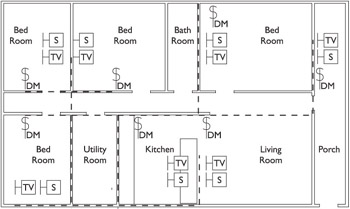
Figure 16-1: The floor plan of a building is a vital part of the planning for a distributed audio system.
With the floor plan in hand and a concept of the customer’s desires, you should be able to move on to the design phase of the project.
Designing a Distributed Audio System
During the design phase of the project, it’s important to decide what components will be included in the system. For a residential distributed audio system, the following components must be considered:
- Audio source unitsIn most home situations, a CD- or DVD-player, preferably a multidisc changer, is the most common audio source device. AM/FM tuners are also common sources. However, with the emergence of digital audio, such as MP3 files or Internet radio from a computer, these options are becoming popular choices as well. The homeowner may also have legacy equipment, such as a cassette tape player, a reel-to-reel tape player, or even a phonograph or turntable.
- Amplifier/ReceiverOften combined into one device, the receiver portion receives AM/FM signals and the amplifier portion boosts the signal and distributes it to the speakers. In some cases, separate receiver and amplifier units provide for the best performance and flexibility in terms of adding additional source units and speakers to the system. In many cases, an existing amplifier/receiver can be used only as an amplifier. In multiple zone applications, a multizone amplifier unit with multiple channels, equalization, and other features may provide the best results.
- Distribution systemThe cabling and impedance matching the distributed audio system must be carefully considered. If multiple rooms in a single-zone system are planned, the impedance matching capabilities of the distributed volume controls and speakers must be matched to the amplifier. The characteristics of the speaker wiring must also be considered.
CROSS-REFERENCE See Chapters 1 and 15 for more information about speaker wiring.
- SpeakersThe choices in speakers vary from in-wall, ceiling, wall and surface mounted, and camouflaged “natural” shape speakers. The primary considerations for speakers are
- Physical appearanceThe speakers should be consistent with a room’s dcor or style.
- Audio coverage (dispersion)The speakers should provide the maximum audio coverage for their zone, with consideration given to the room’s shape, size, and major features, such as a large chandelier, table, or the like.
- Acoustic sensitivityLarge rooms, such as family rooms, recreation rooms, or living rooms, can present an audio balance challenge, especially if the room’s furniture, draperies, or carpeting absorbs sound, decreasing the volume that is heard. In smaller rooms, such as laundry rooms or bathrooms, the hard surfaces make the volume seem louder. Larger rooms may need additional or larger speakers and smaller spaces may need fewer or smaller speakers. Most manufacturers supply specifications about the sensitivity of each model of speakers they make, which is normally expressed as a number of decibels (dB)at 1 watt when measured at 1 meter from the speaker. This specification helps determine the best speaker or speaker set for a room and the amplifier requirements needed to drive the speakers in a room.
- Volume and keypad controlsThe design of a distributed audio system must show the number and placements of the controls incorporated into the audio system, regardless of whether the controls are dedicated speaker volume controls or keypad controls that control the actions of several of a home’s subsystems. Including the controls in the design will assure wire installation allows for these connections.
Fitting Sound to Rooms
In the design process, the speakers must be matched to the room size and the dB output desired for the room. The factors involved are the number of rooms and the number of speakers in each room. The power rating (in watts) of the amplifier must be sufficient to drive the speakers at the volume (in dB) desired for each space. The rule of thumb is that larger rooms need more power to produce acceptable sound levels. And for customers that like to play their music loud, even more power may be needed from the amplifier.
Speaker Sensitivity
Speaker or acoustic sensitivity ratings are available for nearly all quality speakers. Understand that a speaker sensitivity rating has almost nothing to do with sound quality, but everything to do with the amount of volume a speaker can produce from an input at a given power level.
The sensitivity rating of a speaker is stated as db/Wm, which translates to decibels per watt of power measured at 1 meter (about 3.3 feet) from the speaker. If a speaker has an acoustic sensitivity rating of 90 db/Wm, this means that the speaker produces 90 dB of sound from an input of 1 watt of power from the amplifier about 3 feet (1 meter) from the speaker.
| Note |
90 db/Wm is a fairly average sensitivity rating for most speakers. A speaker with a rating of 87 or below is considered low sensitivity and a speaker with a 93 or higher sensitivity rating is considered high sensitivity. |
What this means in terms of designing the sound system for a particular room or zone is that for an average amplifier that produces only a few watts of output power, speakers with higher sensitivity will be needed in areas where louder volumes are desired, such as in a home theater. The other way to address this issue is to drive low sensitivity speakers with more watts from the amplifier. However, be aware that the watts rating of amplifiers can also be a moving target. For example, on an inexpensive amplifier the potential watts-per-channel rating may coincide with the distortion level on each channel. Higher quality, and typically higher cost, amplifiers provide more accurate power ratings.
Acoustical Room Issues
Not every room is acoustically engineered—in fact, few rooms are. Sound produced by speakers in a room resonates around a room and the room’s width and length can impact its quality, loudness, and clarity. The dimensions of a room affect the sound coming from a speaker in the same way that the sound from a pipe organ is affected by the diameter and length of each pipe.
A typical room has three physical features (a ceiling, a floor, and the walls), each producing a different audio frequency as sound resonates (bounces) around the room. Depending on where the speakers are located in a room, the sound produced will seem louder or softer due to the architectural features the sound encounters between the speaker and the listener.
The placement of speakers in a room is typically the only method available to you to improve the acoustics of any space, assuming that the ceiling, walls, floors, locations, and coverings cannot be changed.
Acoustical Design Issues
To improve the acoustical quality of any room, there are a number of issues to consider in the design and placement of speakers in the room. These issues include:
- The dimensions of a room
- The placement of doors, windows, and other architectural features in the room
- The location of Heating, Ventilating, Air Conditioning (HVAC) vents and ducts
- The materials used in the wall, ceiling, and floor construction
Each of these issues should be considered when determining the location of the speakers in a room. Any of these issues can effect the quality of the sound a speaker produces by blocking the sound, vibrating because a speaker is placed to close to it, or absorbing too much of the sound.
Locating Speakers and Controls
The location of an audio system’s speakers and controls are largely determined by the homeowners’ desires and the room’s dcor.
The homeowners’ desires should help determine where built-in or freestanding speakers are best for any given room. The homeowner should also help in the placement of controls as they know how the room will be laid out and used.
Built-In Speakers
Built-in speakers come with their very own set of limitations and problems. When designing the installation for built-in speakers, check with the manufacturer’s appropriate baffle specifications so that you avoid a situation where there are too many or too few wall studs, hangers, or other construction features near the speakers.
Built-in speakers produce a conical audio pattern, which means that the sound produced can be heard very well directly under the speaker. However, when stereo sound is separated to two speakers, unless the speakers are placed in an overlapping pattern, the listener may hear one stereo channel louder than the other. Figure 16-2 illustrates this point. Although this illustration is somewhat exaggerated to make my point, in the shaded area the listener hears both stereo speakers equally. However, as the listener moves either left or right, the speaker on that side becomes dominant.
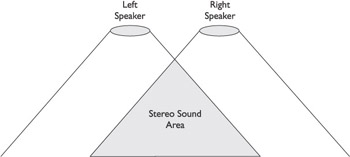
Figure 16-2: Overlapping stereo speakers allow listeners to hear both speakers equally.
Built-in speakers are designed to be installed in walls or ceilings with the speaker grill flush with the wall or ceiling surface. They are designed to be installed in a wall or ceiling cavity, but it’s a good idea to configure the cavity so the back of the speaker is covered to prevent insulation, dust, and other debris from getting inside the speaker. A simple solution is to fold a piece of cardboard from the speaker’s carton and wedge it into the hole before installing the speaker. Some manufacturers now offer in-wall boxes (for new construction) or damping/isolation kits (for retrofit applications). Another consideration is to use weatherized speakers if the speakers will be exposed to a lot of humidity in the speaker cavity.
Freestanding Speakers
Freestanding speakers have finished surfaces such as wood boxes or laminate surfaces for display and aesthetics. They can be placed on a stand, pedestal, bookshelf, or in a speaker cabinet. They can be mounted to walls, ceiling, or overhangs. In fact, speakers are typically designed and manufactured for a specific type of mounting. An in-wall (built-in) speaker would look and sound terrible mounted on a pedestal.
Placing SpeakersSpeakers should be placed in a room or zone where they produce the best stereo sound effects for the listener. The general guidelines for placing speakers in a room are
- SeparationThe speakers should provide left and right stereo separation when the listener is facing the main feature of a room. If there is no main feature, then the speakers should be placed facing the primary seating area. A room’s main feature may be a fireplace, large window, or a television set or monitor. Speakers should not be placed any closer than 24-inches to any room boundary, including walls, corners, ceilings, or floors.
- ZoningA general practice used for speaker placement is to divide the room into three conceptual equal-sized listening zones. A speaker should be placed at the points where any two of the zones intersect, placing the speakers about the same distance from the room’s corners and the main listening location. Speakers should not be placed too close to a room’s corners to avoid what is called “doubling,” which creates a booming sound in the audio. To avoid doubling, the speakers should be placed about one-quarter or one-third of the distance into the room away from a corner or wall.
- DirectionalityThe ideal placement for freestanding speakers is to have the tweeters at approximately the same height as the listener’s ears, as high frequencies tend to be more directional. Since this placement option is rarely available when using in-wall or ceiling speakers, many manufacturers now offer tweeters or mid-tweet baffles that are designed to pivot, allowing the installer to adjust the speaker to direct the high frequencies toward the listening position.
Designing Equipment Configuration
Before beginning to actually install an audio system (or an audio/video system), you should carefully plan how the source, distribution, and end devices are to be laid out and connected to the distribution wiring, as well as to each other.
The best way to document the layout, connections, and equipment placements in an audio system is to create a line diagram of the system. Figures 16-3 and 16-4 are examples of simple line drawings and very detailed drawings, respectively, of an audio visual (AV) system. Normally, all that is needed more closely matches Figure 16-3 than Figure 16-4, but with a sufficient level of detail on the diagram, the drawing can be included in the system’s documentation for future reference.
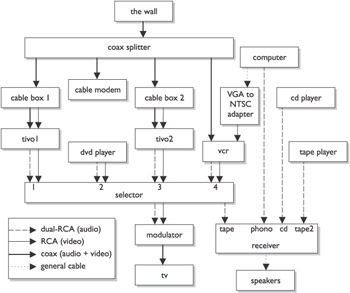
Figure 16-3: A simple AV system line diagram showing the general connections between the components of the system
Image courtesy of Neilfred Picciotto
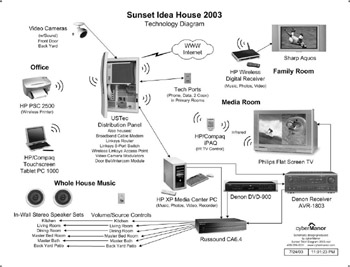
Figure 16-4: A complete AV system line diagram that details each of the connections, the wiring run, and the components of the system
Drawing courtesy of cyberManor
Pre Wiring
The standard for the wiring systems in residential settings is Telecommunications Industry Association/ Electronic Industries Alliance (TIA/EIA) 570A (see Chapter 4), which provides for both existing and most new technologies expected in the near future. This standard provides specification and standards for the primary cable runs of a distributed audio system.
| CROSS-REFERENCE |
See Chapter 4 for more information on TIA/EIA cabling standards. |
A wiring plan for the distributed audio system should be developed with each of the three types of basic wire runs indicated on the plan. Figure 16-5 illustrates a very basic pre-wiring plan for 1) amplifier to distribution device, 2) distribution device to volume controls, and 3) volume controls to speakers.
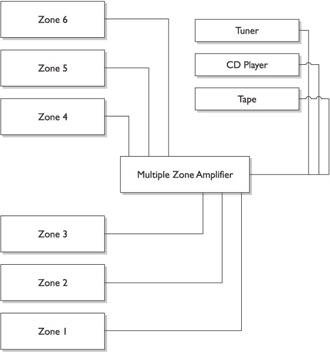
Figure 16-5: A distributed audio pre-wiring plan showing the paths of the cable runs
There are four basic types of cable runs in a distributed audio system:
- Amplifier to distribution deviceThe source equipment is connected locally to the amplifier and it is then connected into the system’s central distribution device. It is usually best to locate the distribution device as close to the amplifier as possible. The recommended cable support for the amplifier to distribution device is
- Three pairs (six conductors, usually 16- or 14-gauge) of speaker wireFour of the speaker wires’ conductors connect and carry the left and right speaker signals from the amplifier to the distribution device. The remaining two conductors can optionally be used to carry direct current (DC) voltage to the distribution device for control applications.
- One run of Cat 5e cableThe four-pair Cat 5e cable provides support for such features as infrared (IR) extension, data communications, and video distribution.
Note Multiple cable runs should be planned into a room or zone to support situations where multiple system components are to be installed.
- Distribution device to volume controlsThe cables in these runs connect the distribution device to the volume controls in each zone. The cables that should be included are
- Two pairs (four conductors) of speaker wireThese wires carry the audio signals to the volume controls that will pass the signals to the speakers.
- One run of Cat 5e cableThis cable provides for future expansion or a multiuse faceplate that could provide for a possible control keypad or IR reception for a remote control extension system. The cable can be used to support keypads, displays, amplified speakers, or IR extension systems. Many in-wall and ceiling speakers have knockouts that allow a remote IR sensor to be placed behind the speaker grill.
- Volume controls to speakersWiring is required from the volume control to each speaker in a zone. The cabling in this run should include:
- One run of two-conductor speaker wire to each of the two speakersThese runs carry the audio signal from the volume control to each speaker.
- One run of four-conductor speaker wire to both of the speakersLeave a two-foot loop of wire at the location of the first speaker, and then run the four-conductor cable to the other speaker’s location. Four different colored wires allow for easy hookup and wire-pair matching at each speaker. Be sure you pay attention to the impedance of the system.
- Local source to speakersIf the room has a CD, stereo, television, or another type of audio source component, the speaker wiring should loop from the volume control to the local source component and then on to the speaker. Both the four-conductor speaker wire and the Cat 5e cable should run from the volume control or keypad control and be connected to the outlet to be used by the local device. Figure 16-6 illustrates how a local source device is connected into a distributed audio system.

Figure 16-6: Local audio source devices can be connected into a distributed audio system.
Cable Considerations
Typically, 16-gauge stranded twisted-pair (TP) wiring is used for an average length speaker run, with heavier wiring used for very long runs. The twist in the wire helps reduce the interference the cable could pick up.
There is a difference between real speaker cable and what is called interlink, or interconnect, cable. Speaker cable is designed to carry a powered signal, which means that it doesn’t need much in the way of shielding to protect it from interference. Figure 16-7 shows an example of clear-jacketed speaker cable. Audio interconnect cables carry a line-level, nonpowered signal between two audio system devices and are susceptible to interference, therefore this type of audio cable requires shielding.
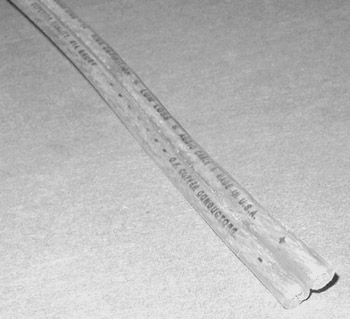
Figure 16-7: Clear-jacketed speaker cable provides no electrical shielding.
Choosing Speaker Wiring
There are several types of speaker wire on the market. The following terms are commonly used to describe speaker wire and its characteristics:
- Cable RatingsThe cable that meets the standards for a specific use is normally tested and rated for that use. For example, a cable designed for installation inside a wall, generally called plenum cable, carries a premise-wiring rating. Unfortunately, you can’t assume that all speaker cable has a premise-wiring rating. Cable that has a premise-wiring rating complies with the National Electric Code (NEC) and National Fire Protection Agency (NFPA) standards, which provides you and your customer with the assurance that the cable meets the appropriate fire safety and electrical standards. Speaker cable that is installed inside a wall must meet all local and national electrical and fire safety standards as a high fire retardant wire. Premise rated speaker cable and wire carries either an Underwriters Laboratory (UL) Class (CL) 3 or CL3R (riser) rating (see Figure 16-8). CL3 plenum cabling can be strung inside an HVAC duct, if needed, but the cable should not be installed on or near a dust-collecting electrostatic wire inside the duct.

Figure 16-8: An illustration of a CL3-rated speaker cable
Original image courtesy of Canare Corp. of America.
- GaugeThe wire gauge selected for a home AV system should be chosen based on its properties and the distance of the wiring runs. Speakers have low impedance (4 to 8 ohms); therefore, the resistance in the wiring is key to determining how much of the audio signal will reach the speaker. For example, a 100-foot run of 16- gauge TP wiring has a round-trip resistance of 0.8 ohms. When this wire is used with a 4-ohm speaker, 17 percent of the signal is lost to the resistance on the wire and only 83 percent of the sound signal actually reaches the speaker. The solution to this is to use heavier wire. The wire sizes typically used for home audio systems are 16 American Wire Gauge (AWG) or 14 AWG. They provide good compromises against signal loss, cost, and ease of installation. On top of that, the connectors on most audio devices are designed for these wiring sizes. Table 16-1 shows the power loss budget for 16 AWG and 14 AWG speaker wiring. Table 16-2 shows the gauge wire to be used based on the length of the run for virtually any home audio.
Table 16-1: Speaker Wire Power Loss Budget Table Speaker Ohms
Per cent of Db Loss
Power Loss
16 AWG Run
14 AWG Run
4
0.5
11
60 feet
100 feet
4
1.0
21
130 feet
210 feet
4
2.0
37
290 feet
460 feet
4
3.0
50
500 feet
790 feet
8
0.5
11
120 feet
190 feet
8
1.0
21
260 feet
410 feet
8
2.0
37
580 feet
930 feet
8
3.0
50
990 feet
1,580 feet
Table 16-2: Speaker Wire Gauge to Run Length Wire Length to Speaker
Wire Gauge to Be Used
50 to 100 feet
16-4 or 16-2 AWG speaker wire
100 to 150 feet
14-4 or 14-2 AWG speaker wire
Over 150 feet
12-4 or 12-2 AWG speaker wire
Note For virtually any home audio installation, 16 AWG or 14 AWG wire should work well for runs that are 100 feet or less. It is recommended that 12 AWG wire be used for runs in excess of 150 feet.
Speaker Wire Guidelines
When designing for the installation of speaker wire, there are a few guidelines you should observe:
- Speaker wire should be installed at least 2 feet from electrical wiring.
- If the speaker wire needs to cross an alternating current (AC) line, it should do so at a 90-degree angle.
- Always use full-run (continuous) lengths of cable when installing wiring in a wall or ceiling. If you absolutely cannot do so, two lengths of speaker wire should be joined using crimp connectors rather than wire nuts, but it is never recommended.
- Speaker wiring should be the last wiring you install. You should have already installed the electrical and data wiring, and should install the speaker wire directly after installing all HVAC and plumbing systems.
- In a new construction situation, the speaker wiring should be tested before and immediately after the dry wall is installed.
Design Issues
Here are some cable facts you should consider during the design phase:
- Oxygen-free copperThe best conductive copper for wiring and cabling is 99.99-percent oxygen free. Standard speaker wire cable is typically 99.90-percent oxygen free. If you wish to install the best cabling available, look for the code “OFC” (oxygen-free copper) printed on the cable’s outer jacket.
- Lower gauge/thicker cableA lot of speakers will work adequately with cable as small as 22-gauge wire. However, for longer cable runs, a thicker cable (with a lower gauge) extends the attenuation point of the wire. In terms of price and performance, at least 16-gauge wire should be used for the in-wall wiring for speakers.
- High strand count/better performanceWhen a higher number of strands are used in a wire, it creates a greater surface area. When a signal is transmitted across a wire, the electrons actually flow along the surface of the wire. So, more surface area means a better quality signal with less signal loss.
Audio System Rough In
There are actually three different rough-in activities involved with a distributed audio system: wiring, speakers, and local room controls. Each of these rough-in activities has its own particulars, but in the end they all come together to provide the infrastructure of the audio system.
Rough-in is performed after the electrical cabling, plumbing, and HVAC rough-in has been completed and before the finished wall surface, typically drywall, is installed. Waiting until after the other rough-in work is completed prevents any of the other in-wall systems, such as running electrical wiring through the same holes of the audio wire, from interfering with the audio system’s cabling.
Figure 16-9 illustrates the general concepts of rough-in for an audio system. Although this illustration simplifies this part of the project, it does show the parts of an audio system that are installed during the rough-in phase of the project.

Figure 16-9: The primary components of a distributed audio
Speaker Rough in
During the design phase, either you or the customer (or both) have selected the size, shape, and brand of speakers and volume controls to be installed. When installing speakers and volume controls during a new construction project, you should install mounting brackets, if available, for any in-wall or in-ceiling, flush-mounted speakers and boxes for volume and keypad controls during the rough-in phase. Figure 16-10 shows the rough-in mounting bracket for a round in-ceiling speaker. Most speaker manufacturers sell rough-in kits separately for virtually all in-wall and surface mount audio speakers and controls.
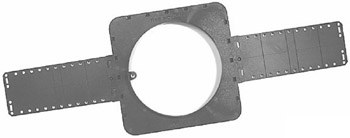
Figure 16-10: A rough-in mounting bracket for a flush-mounted speaker
Photo courtesy of Crutchfield New Media, LLC.
Rough-in boxes for mounting volume controls or control keypads are available in a variety of types. These boxes and mounting brackets can be either single-gang or double-gang mountings, with open or backless boxes, to hold one or more control devices. Figure 16-11 shows two styles of rough-in mounting boxes for volume or keypad controls. In Figure 16-11, the box on the left is a single-gang backless box and the box on the right is an electrical box with a low-voltage mounting bracket attached to its side.
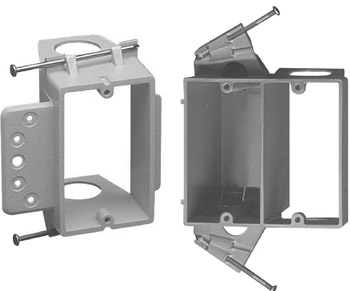
Figure 16-11: Two styles of low-voltage boxes that can be installed during rough-in for later use for volume controls or keypads
Photos courtesy of Lamson & Sessions.
There are pros and cons to using rough-in kits. The benefits of rough-in mounting brackets include the early placement of speakers, resolving speaker mounting support issues, the fit of recessed speakers, and more accurate hole cutting when the drywall is installed. The primary disadvantages of using rough in kits are that they can lock in a device brand, size, and shape, permanently lock in the location of an audio system device, and the rough-in mounting’s alignment is critical to the finished fit and alignment of a flush-mounted device.
In-wall and flush-mount speakers come in a variety of sizes and shapes. Typically, flush-mount ceiling speakers, like the one shown in Figure 16-12, require specific mountings to ensure fit and proper function, depending on their depth and circumference. If a mounting bracket isn’t installed during rough-in, you have two choices: As illustrated in Figure 16-13, you can zigzag and loosely staple the wiring between a pair of studs that straddle the location of the speaker, or you can install a speaker that has mounting clips or clamps built in, like the speaker shown in Figure 16-14.If you choose to zigzag the wiring, you should photograph the wall prior to the drywall being installed over wiring so you later know where to make your cut in the drywall for installing the speaker.

Figure 16-12: A flush-mounted ceiling speaker
Photo courtesy of Broan-NuTone, LLC.
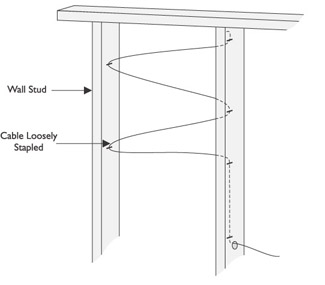
Figure 16-13: Zigzag wiring between studs for future installation of speakers
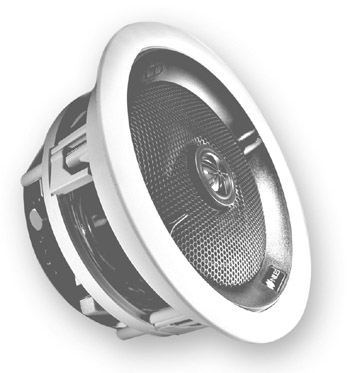
Figure 16-14: A short depth recessed ceiling speaker
Photo courtesy of Niles Audio Corp.
Surface-mount or wall-mounted speakers require only that a standard J-box, mounting box, or mud ring, and of course the speaker cable, be installed so that the mounting bracket or foot on the speaker can be secured to the wall.
Whether or not a rough-in kit is used to locate a wall or ceiling speaker depends on the customer’s wishes or your preferences. If the customer and you decide against using a rough-in mounting, remember that you will need to cut the drywall to accurately install the recessed speakers using the wiring installed during pre-wire in the locations documented by your pre-wire photographs.
Installing Audio Cable
In a new construction situation, the installation of audio cabling follows the general structured cable installation guidelines.
| Note |
As each cable is installed, it should be labeled according to the wiring diagram. Ensure that all of the cable that terminates at the central wiring distribution panel is labeled to ease the installation and connection of the distribution panel. The labels also help to facilitate wire testing and the trim-out and finish work yet to be accomplished. |
| CROSS-REFERENCE |
See Chapters 5 and 6 for information on installing structured cable. |
However, installing in-wall cable in what is called an “old work,” or retrofit situation, rough-in is a bit trickier. The outlet boxes and cable must be installed behind existing walls without damaging the drywall surface.
Snaking in the CablePerhaps the hardest part of installing structured cabling in a retrofit situation is installing the cable inside the walls. Inside an existing wall there is likely electrical, telephone, and TV cabling, not to mention plumbing and perhaps wiring for other fixtures.
Depending on the home and its design, there are three options for installing audio cable (or any structured cable component):
- Inside the wallsThis method requires that the cable be routed through the existing studs while avoiding electrical, plumbing, and other previously installed systems.
- Through an atticUsing this method, the audio cable can be run from the central distribution panel, which is referred to as an integrated service unit (ISU), to and through the top rail of the wall studs above the cavity in which the outlet box is or will be installed. Of course, using this method presumes a clear space exists above the main floor of the house in which to run the cable.
- Under the floorProvided the house has either a basement or a crawl space in which to run the cables, the cables can be pulled through the footing rail of the wall studs and into the cavity in which the outlet box is installed.
Installing Cable in the WallsPerhaps the most important task of installing audio cable in an existing wall is to first locate the wall studs and any plumbing lines that lay behind the drywall or other surface covering, such as lath and plaster. Most quality stud-finders will locate wall studs as well as any metal behind the wall.
When all of the studs or pipes are located in the walls you plan to use to install the cable, you can plan the route for the audio cable. Always work with a whole-house diagram, rather than each room individually. Before you begin cutting access holes in the walls to run the cable, you should first check for obstructions or wiring in the space through which you plan on running cable. Once you have settled on the wire path, use either a drywall saw or a box cutter knife to cut away the drywall and expose the wall stud through which the cable will pass. Use a hand drill and a small drill bit to cut a hole in the wall in an out-of-the-way location that can be patched easily should the location prove unusable. A good practice is to use locations that are inconspicuous or can be hidden behind furniture or other objects.
Push a straightened-out wire coat hanger bent at an angle into the hole and fish around gently (there could be electrical wiring in there!) for any wires or pipes in the space where you plan on installing the audio cable. If you find fixtures in that location, adjust your wire plan accordingly.
Use a long-length drill bit to drill a wire path through the wall stud. A flexible shaft “flex-bit” is very handy in this application. Typically, the wire path should be at a slight downward slope because of the small opening in the wall through which the drill bit is inserted.
Push the cable through the wall opening and through the hole in the wall stud towards the next opening. Use the straightened coat hanger (with bent hook big enough to fit around the cable) to pull the wire to the wall opening. Drill the next hole, insert the cable, and pull it to the wall opening, repeating the steps until the cable is installed throughout the room or the house.
Special InstallationsNot all walls have wood studs. In some newer construction, sheet metal studs may be used for a house’s framing. In these cases, after drilling a hole for the cable, insert a plastic grommet before inserting the cable through the stud to protect the cable from the sharp edges of the metal.
When passing through a metal stud or ceiling joist, the NEC requires that the cable be no closer than 1.25-inches to the edge of the stud or joist and a protective plate that is at least 1/16 of an inch thick must be installed to protect the cable from nails or screws.
Remember that speaker wire should be installed separately from all other wire and should be at least 1-foot away from any other wiring, including other structured cable and electrical wire and any light fixtures in the walls or ceilings.
Volume Control Rough In
In both new construction and retrofit situations, outlet boxes of sufficient depth to mount the volume control units must be installed in the walls where the volume controls are to be located. Follow the guidelines described in Chapter 3 to place the boxes in the walls and pull cable to them.
The speaker wiring should run to the volume control and then to the speakers to be controlled with a loop at the volume control location. Figure 16-15 shows an example of a local volume control device. In a multiple zone application, the speaker wire is usually left in a continuous loop to the speakers since the audio signal comes directly from the distribution equipment, and the Cat 5 cable is used to connect the local keypad to the system’s zone control preamp at the main system location. Although many brands specify specific cables for their zone control keypads, most brands now offer compatibility with Cat 5 cable.
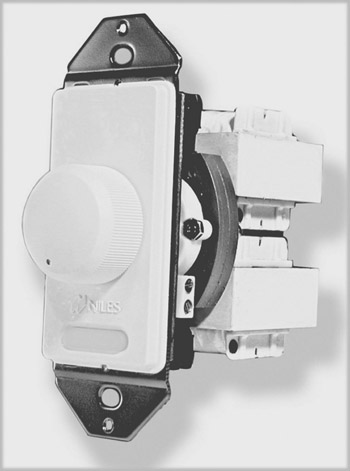
Figure 16-15: A remote speaker volume control
Photo courtesy of Niles Audio Corp.
Local Source Rough In
If the customer wishes to use the speakers in a room or zone for local AV sources in addition to the whole house system, some switching method, either manual or automatic, must be designed into the system. If local sources are designed into the system, the design must reflect that the speaker wiring go to the source switch before going to the speakers. If a local volume control is also included, it is wired before the source switch.
Testing the Cable
After the cabling is installed, a cable verification test should be performed. This testing determines if nails, screws, or any other sharp items in the wall may have damaged the cable during installation. For any unterminated cable , such as speaker wire, the testing procedure should test for any opens or shorts in the speaker cable and the continuity of each conductor in the wire.
| CROSS-REFERENCE |
See Chapter 1 for more information on wire basics and wire testing procedures. |
Audio System Trim Out
As is the case in any trim-out operation, the cables are terminated and tested. In the trim-out phase of a distributed audio installation, each of the speakers, speaker jack wall plates, volume controls, and keypads are installed. Follow specific manufacturers’ instructions for installation of these devices.
| CROSS-REFERENCE |
Chapter 2 details the audio connectors and when each is used. |
In addition to the connectors detailed in Chapter 2, some speakers require spade-type connectors (illustrated in Figure 16-16). Spade connectors are crimp-on connectors that are easily installed.

Figure 16-16: An audio cable terminated with spade connectors
Photo courtesy of Monster Cable Products, Inc.
Audio System Setup and Testing
After all devices are trimmed out, install the components and hook up all equipment per documentation. Be sure to follow the line diagram of equipment hookup developed during the design phase. If any changes are made on site, be sure to record them on the line diagram so that final documentation of the system hookup is completed.
All control keypads need to be setup and programmed if necessary. This may include programming through setup software and learning the IR codes needed to control the equipment. Follow the manufacturers’ documentation for setting up and programming.
Now test the system in every zone. Be sure to test each volume control in each location and make sure every speaker has output and sounds good. On the control keypads, test and verify every button performs as set up and programmed.
Review
The first consideration when planning a distributed audio system is whether the system is a retrofit or new construction. During the planning phase of the project, a number of issues must be considered, including single or multiple audio sources, zones or controllers, local source devices, future devices, the limitations of the floor plan, and the budget.
Begin the design with a floor plan and work with the customer to place the speakers, source equipment, and controllers into the rooms. During the design phase of the project, the decisions on the components to be included are made.
Speakers must be matched to the room size and the dB output desired. The factors involved are the number of rooms and the number of speakers in each room. The rule of thumb is that larger rooms need more power to produce acceptable sound levels. An average amplifier produces only a few watts of output power and the speakers may need higher sensitivity where louder volumes are desired. The placement of speakers in a room is typically the only method available to you to improve the acoustics of any space, assuming that the ceiling, walls, floors, locations, and coverings cannot be changed.
To improve the acoustical quality of any room, a number of issues should be considered in the design and placement of speakers in the room, including the dimensions of a room, the placement of doors and windows, the location of HVAC features, and the wall, ceiling, and floor materials and construction. Speakers should be placed in a room or zone where they produce the best sound applying certain principles: separation, zoning, and directionality.
The standard for the wiring systems in residential settings is TIA/EIA 570A, which provides specification and standards for the primary cable runs of a distributed audio system. There are four basic cable run types in a distributed audio system: amplifier to distribution device, distribution device to volume controls, volume controls to speakers, and local source to speakers. Several types of speaker wire are available. Cable rating and gauge are the terms commonly used to describe speaker wire and its characteristics.
Three rough-in activities are involved when installing a distributed audio system: wiring, installing speakers, and establishing local room controls. In a new construction situation, the installation of audio cabling follows the general structured cable installation guidelines. After installing the cable, it should be tested to determine if nails, screws, or any other sharp items in the wall have damaged it during installation.
During the trim-out operation, cables are terminated and tested and the speakers, wall plates, volume controls, and keypads are installed. After the connection devices are trimmed out, the components are installed and hooked up. Next, all controls are set up and programmed. Finally, the system is tested in every zone.
Questions
- Which of the following is not a distributed audio system design consideration?
- Single or multiple audio sources
- Brand and model of source devices
- New or existing source units or speakers
- Budget
- What is the purpose of an amplifier in a distributed audio system?
- Signal amplification
- Volume control
- Impedance matching
- Stereo sound balancing
- What is the standard for residential structured wiring for audio?
- TIA/EIA 568A
- TIA/EIA 568B
- TIA/EIA 570A
- TIA/EIA 232
- Which of the following is not a basic cable run in a distributed audio system?
- Amplifier to distribution device
- AC power wiring for source units
- Distribution device to volume controls
- Volume controls to speakers
- By what factor should the amplifier’s output be increased to affect a 10 dB increase in speaker output?
- Two
- Three
- Five
- Ten
- During which phase of an audio installation project is the wiring installed?
- Planning
- Rough-in
- Trim-out
- Testing
- What is the acoustic sensitivity rating of an average speaker?
- 80 dB/Wm
- 87 dB/Wm
- 90 dB/Wm
- 93 dB/Wm
- What is the purpose for testing an audio cable at the end of the rough-in phase?
- Check for proper termination
- Check for shorts in the wire
- Check for wire continuity
- All of the above
- What rating should an audio cable have to be installed in an HVAC duct?
- 22 AWG
- Premise wiring
- Plenum rating
- No specific rating required
- Which of the following are included as rough-in activities when installing a distributed audio system?
- Wiring
- Installing speakers
- Establishing local room controls
- All of the above
Answers
- B. During the planning phase, only the power requirements and impedance issues are important. The other choices are important, but perhaps budget is the most important consideration.
- A. Most amplifiers don’t perform the other actions listed.
- C. TIA/EIA 568 standards cover Cat 5 wiring and 232 is a serial connection standard.
- B. AC wiring is not included in structured wiring systems.
- A. The amplifier’s output in watts must be increased by a factor of two to achieve an increase of 10 db.
- B. Wiring is pulled into the walls during the audio rough-in phase along with the installation of speaker brackets and boxes. Planning and testing are self-explanatory, and during trim-out the wire is terminated.
- C. A rating of 87 dB/Wm or below is considered low sensitivity and a rating of 93 dB/Wm or higher is considered high sensitivity.
- D. These are the primary tests that should be performed on newly installed and terminated cabling.
- C. This rating describes a cable that is fire-rated for use in ducts and commercial applications.
- D. Each of the activities included in answers A, B, and C are performed as rough-in activities for a distributed audio system.
Part I - Home Technology Installation Basics
- Wire and Cable Basics
- Connector Types and Uses
- Wiring Installation Practices
- Codes, Standards, and Safety Practices
Part II - Structured Wiring
- Infrastructure Wiring Basics
- Planning a Structured Wiring Installation
- Rough-In Installation
- Trim-Out Installation
- Troubleshooting Structured Wiring
Part III - Home Computer Networks
- Computer Network Basics
- Computer Network Hardware
- Computer Network Software
- Designing and Installing a Computer Network
- Troubleshooting a Home Network
Part IV - Audio/Video Systems
- Distributed Audio System Basics
- Designing and Installing Distributed Audio Systems
- Distributed Video Basics
- Designing and Installing Distributed Video Systems
- Troubleshooting Audio Systems
- Troubleshooting Video Systems
Part V. Home Lighting Management Systems
- Home Lighting Basics
- Home Lighting Devices
- Designing a Home Lighting Control System
- Installing a Home Lighting Control System
- Troubleshooting and Maintaining Lighting Control Systems
Part VI - Telecommunications
- Home Communication System Basics
- Designing and Installing a Home Telephone System
- Troubleshooting a Home Communication System
Part VII - HVAC and Water Management
Part VIII - Security System Basics
- Security System Basics
- Designing a Home Security System
- Installing a Home Security System
- Troubleshooting and Maintaining a Home Security System
- Home Security Surveillance Systems
- Home Access Control Systems
Part IX - Home Technology Integration
- Defining Users Needs and Desires
- User Interfaces
- Home Automation Controllers
- Programming
- Integrating the Connected Home
- Other Home Technology Integration Devices
Part X - Appendices
EAN: N/A
Pages: 300
